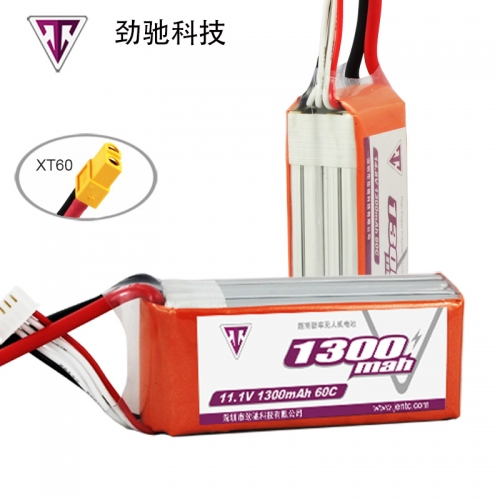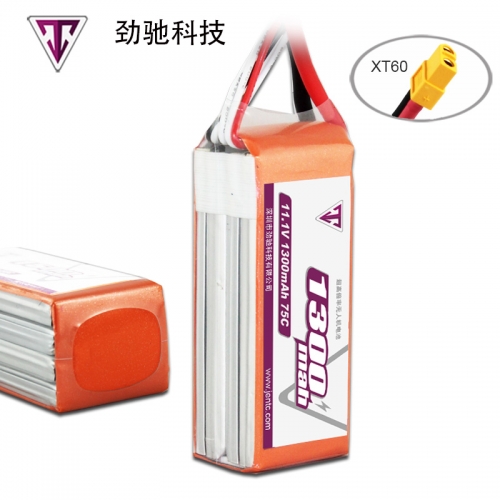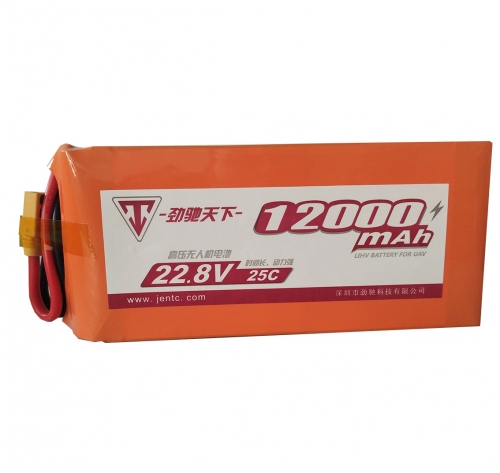What is a model aircraft drone battery? The manufacturing process of lithium-ion polymer batteries generally adopts laminated soft packaging, so the size change is very flexible and convenient, and there are relatively many models. Compared with previous batteries, it has high energy, miniaturization, and light weight. It is a chemical battery. In terms of shape, lithium polymer batteries have ultra-thin characteristics, and can be made into batteries of some shapes and capacities according to the needs of some products. The theoretical thickness of this type of battery can reach 0.5mm. Lithium batteries, which are mainly used in model aircraft series toys, have the characteristics of high rate and stability.
The voltage of the battery is expressed in volts (V). The nominal voltage is only the voltage indicated by the manufacturer according to the national standard. In fact, the voltage of the battery is constantly changing during use. For example, the nominal voltage of the nickel-hydrogen battery is 1.2V, the voltage after charging can reach 1.5V, and the protection voltage after discharge is 1.1V; the nominal voltage of the lithium polymer battery is 3.7V, the voltage after charging can reach 4.2V, and the protection voltage after discharge is 3.6V. In actual use, the voltage of the battery will produce a voltage drop, which is related to the load driven by the battery. That is to say, the greater the load carried by the battery, the greater the current, the smaller the voltage of the battery. After removing the load, the voltage of the battery can be restored to a certain value.
Characteristics of aircraft model drone batteries
1. Relatively speaking, it improves the problem of battery leakage, but it has not been completely improved.
2. It can be made into a thin battery: with a capacity of 3.6V400mAh, its thickness can be as thin as 0.5mm.
3. Aircraft model drone batteries can be designed into a variety of shapes.
4. It can be made into a single high voltage: liquid electrolyte batteries can only have high voltage after several batteries are connected in series, and polymer batteries can be made into a multi-layer combination in a single battery to achieve high voltage because they have no liquid.
Model drone battery capacity
The capacity of aircraft model drone batteries is expressed in milliampere hours (mAh). It means that the battery can maintain a certain current for one hour. For example, 1000mAh means that this battery can maintain 1000 mAh (1 ampere) for one hour. But the discharge of the battery is not linear, so we can't say that this battery can last for 2 hours at 500 mAh. However, the discharge time of the battery at a low current is always greater than the discharge time at a high current, so we can approximately calculate the discharge time of the battery under other current conditions. Generally speaking, the larger the battery, the more power it can store, so the weight of the aircraft will also increase, so choosing a suitable battery is very beneficial for flying. By the way, the nominal power of batteries produced by some manufacturers is often higher than its actual power, so just look at the size of the battery to know whether it is true.
Discharge capacity of model aircraft drone batteries
The discharge capacity of model aircraft drone batteries is expressed in multiples (C), which means how much discharge current can be achieved according to the nominal capacity of the battery. For example, a 1000MAH, 10C battery can have a discharge current of 1000×10=10000 mA 10 amperes (A). In actual use, the discharge current of the battery is related to the load resistance. According to Ohm's law, voltage equals current multiplied by resistance, so when voltage and resistance are constants, the discharge current of the battery is also constant. For example, if you use a 11.1V, 1000MAH, 10C battery, and the resistance of your motor is 1.5 ohms, then when the battery has 12V power, ignoring the resistance of the electric regulator and the circuit, the current is equal to 12÷1.5=8, and the result is 8 amperes (A).











